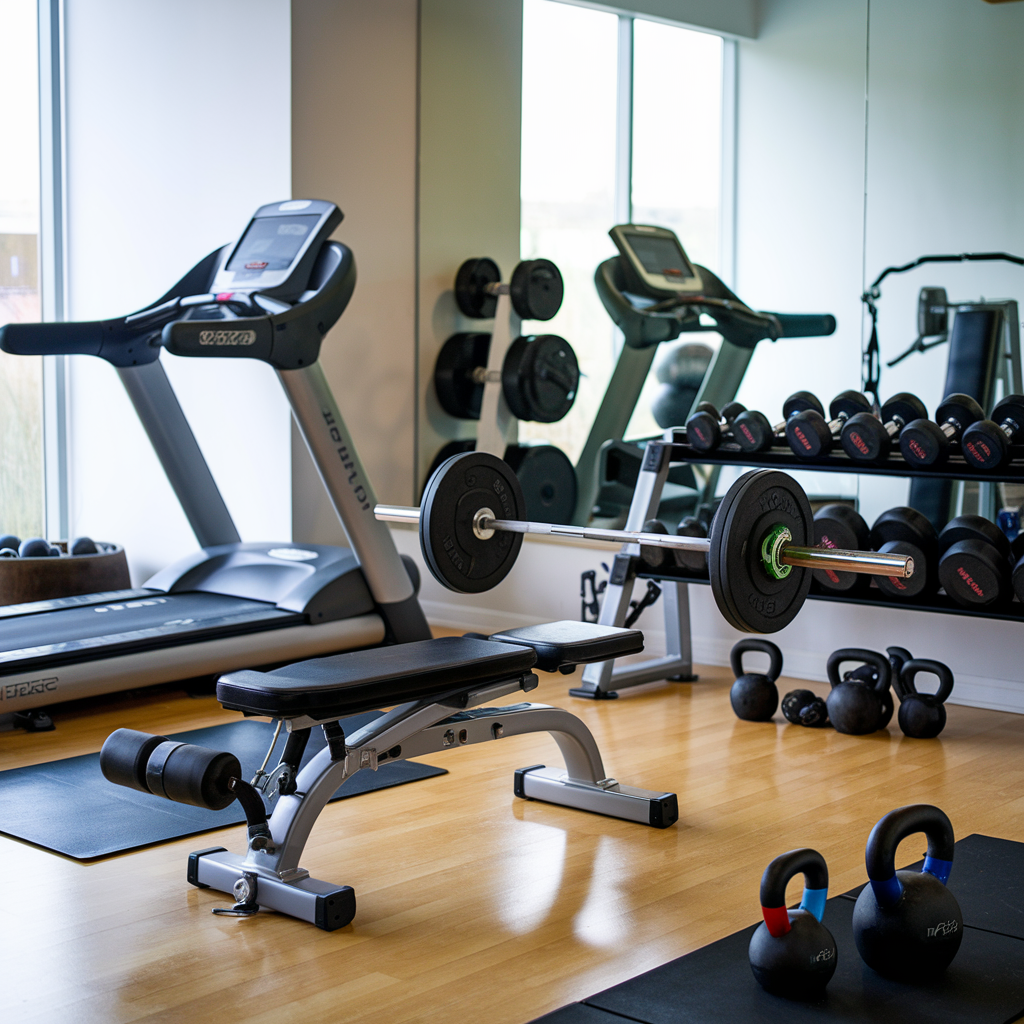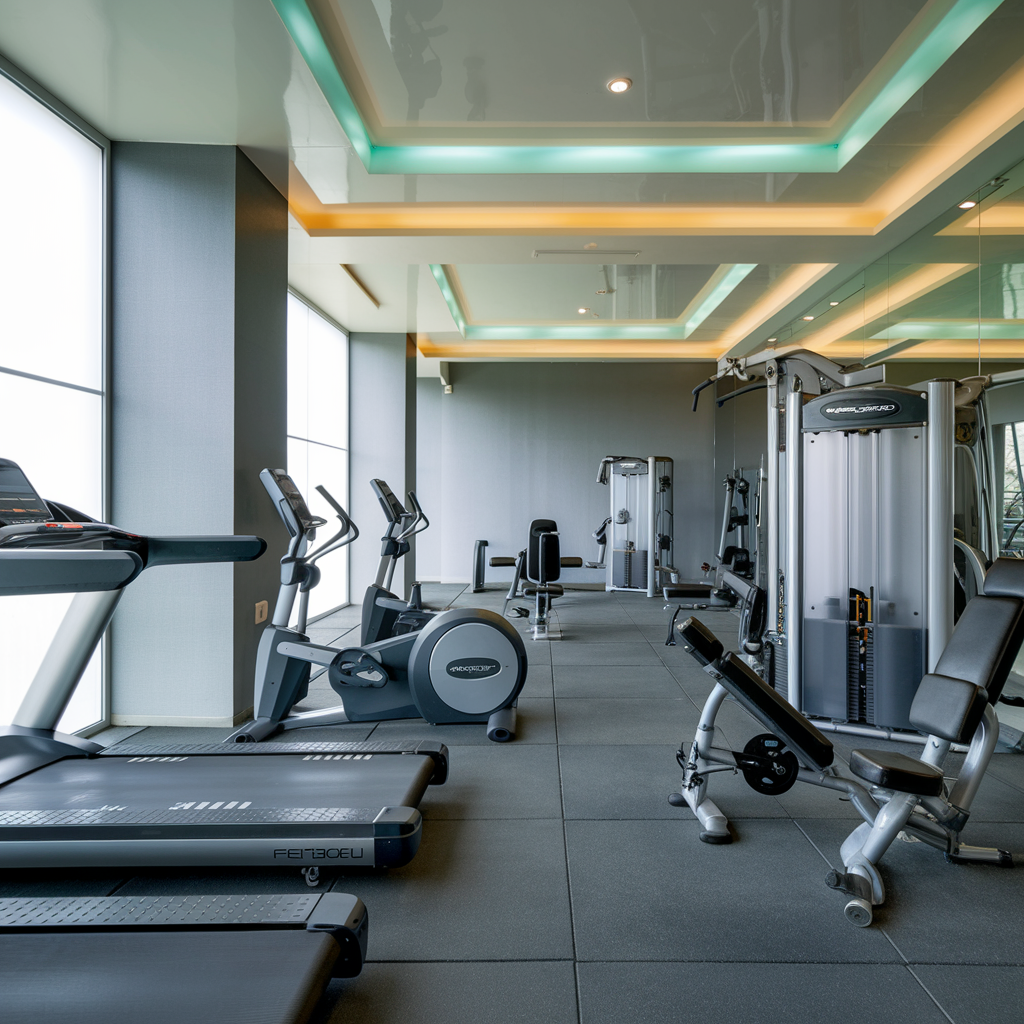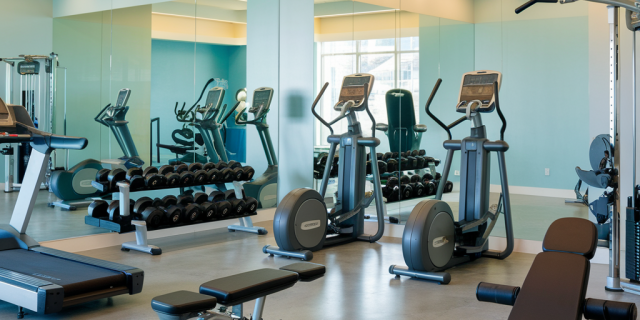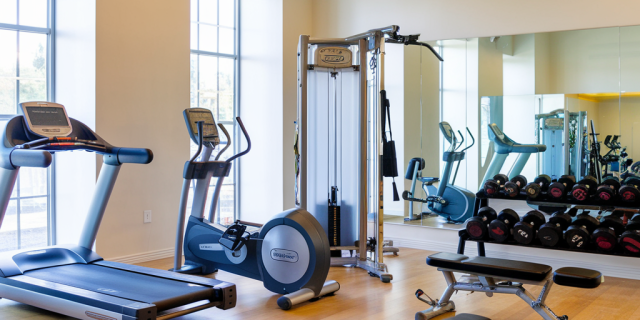Building both strength and confidence might be easier than you think. Imagine using your very own home as a gym. With determination and a little preparation, creating a workout plan that achieves your personalized goals is achievable. Taking everything into account, the real question is: How do you remain motivated to achieve this in the long run? By knowing how to succeed, transforming your self-image becomes easier than you think. In this guide, I will outline some steps to help you set everything up.
Understanding Your Space
Upon beginning your strength journey, start with an ever so important step, a self-assessment of your home and surrounding spaces. Identify places in your home that could be adequate as a workout zone. Perhaps find a place like your backyard or living room where you can stretch and workout without any disturbances.
And now ask yourself the following question: can I comfortably squat and perform push-ups? Make sure the flooring you select is flat and stable. If the area has carpet, it should be cushy enough for support. If your home has a hard floor, then you are good to go!

Look for distractions and noise levels as well. You want to have an environment that supports your focus and motivation. If your house has a peak busy period at a certain hour, schedule your workoutsduring the quieter times.
Finally, do not forget about ventilation and lighting. A well-ventilated area where you are working out will keep you cool during high energy sessions, while good lighting is important for form and technique.
Having the Essential Equipment for Home Workouts makes them effective. You don’t need to purchase an entire gym; a few key items can make a difference.
First and foremost, a good set of dumbbells. Whether you are trying to bulk or cut, these are versatile for all stages and workouts. Use them for a wide variety of exercises aimed at completely different muscle groups. If you need to conserve space, get adjustable dumbbells.
Don’t forget about the additiosal tool like resistance bands. They’re portable, affordable, and perfect for adding variety to your workouts. Use them for strength training, stretching, or rehab exercises.
Also, a yoga mat provides cushioning, stability, and is a great accessory for comfort during floor exercises.
Finally, if you are looking for something compact, a jump rope is a fantastic option as it can quickly and effortlessly elevate your heart rate.
Finally, stability balls can help increase your core strength and balance. They are also good for training and flexibility exercises.
By investing in proper equipment, you will be able to build strength and self-assurance from the comfort of your dwelling. Identify your goal and how much space you have, then pick the pieces of equipment that suit you best.
Designing Your Workout Routine
A balanced workout routine is a necessity when it comes to achieving your health and fitness objectives as well as staying motivated. The first step is to identify your goals, be it building strength, increasing endurance or flexibility and use this to plan the exercises you need to perform.
Then, think about the number of days a week you are looking to train. At least three to five times a week is recommended, mixing in both strength and cardiovascular training. While strength training, include all the major muscle groups by working your legs, back, chest, arms, and core. You can train your upper and lower body on different days for better recovery.
Before the start of every session, remember to warm up and cool down after. This is to help prevent injury and improve recovery time. A reasonable routine would be to start with 10 minutes of warming up, then doing 30 to 45 minutes of your workout, and finally finishing with 5 to 10 minutes of cooldown stretches.
Lastly, as previously said, achieve your goals by monitoring your targets. Try using a journal or an app which can motivate you as you realize your improvements in the long run. Lastly, don’t forget to track your progress.
As stated earlier, variety is key in order to mix up your workouts and exercises. To prevent boredom or plateaus, mix it up with circuit training or interval workouts.
Using Only Your Body for Workouts
Bodyweight workouts are one of the best methods to improve fitness and gain muscle strength because no equipment is needed. Since you can do workouts anywhere, they are superb for your home workout needs. Pushups, lunges, and squats should be the first moves you attempt. These primary exercises change the strength of different muscles at once, which helps you achieve greater strength.
Remember to mix bodyweight exercises with upper body, lower body, and core workouts. You might do push-ups for your chest and triceps and squats for your legs, with planks for your core crammed in there too.
Endeavor to form a circuit using these exercises. When coupled with other exercises, these keep your workouts interesting and enjoyable. You also get to build your stamina and strength at the same time.
Exercises can also be changed to fit your fitness checkpoints. Instead of doing a full push-up, try a knee push-up. As you get stronger, incorporate more advanced moves like diamond push-ups or jump squats.
Make sure to focus on your form, to eliminate the chances of injuries and gain maximum benefit. Including body weight exercises in your routine will certainly build muscle and elevate the self-belief you have in your body.
Goal Setting Achievable Objectives
To accomplish exercises, form a strategy of realistic objectives. Don’t set occupational targets that seem over the top and near impossible. Always set goals that are realistic and can be achieved. Assess your current fitness level to better understand what you can accomplish within a set timeframe. Instead of targeting major changes, work towards incremental changes. For example, if your goal is to do ten push-ups in a month, try aiming for eight first.
Now, set smaller successive milestones instead of aiming towards bigger ones. Trying to aim for a 5k run is a bit scaring at first. To make it feel achievable start with a routine walk or jog and progressively build it from there.
Ensure that your objectives are specific, quantifiable, realistic, meaningful, and time restrained (SMART). This guideline will aid you in remaining focused and accountable.
Keep a record of your fitness objectives and manage to check your progress over time. Make changes whenever necessary to ensure your goals are in sync with your personal growth.
Building a Supportive Mindset
To build a supportive mindset, start by replacing negative thoughts with positive self-talk strategies.
Embracing a growth mindset is essential; it helps you view challenges as opportunities for learning and improvement.
Positive Self-Talk Strategies
Positive self-talk is a powerful tool that can transform your mindset and boost your confidence. By consciously choosing positive affirmations over negative thoughts, you can reshape how you view yourself and your abilities.
Start by recognizing when those negative thoughts creep in. Instead of saying, “I can’t do this,” replace it with, “I can handle this challenge.” This simple shift can make a significant difference.
Next, create a list of affirmations that resonate with you. Statements like “I am strong,” “I am capable,” or “I deserve to succeed” can reinforce a positive self-image.
Repeat these affirmations daily, especially during moments of self-doubt.
Visualizing success can also enhance your positive self-talk. Imagine yourself achieving your goals and feel the emotions that come with that success. This mental imagery will help solidify your belief in yourself.
Embracing Growth Mindset
A growth mindset is essential for building a supportive environment that fosters development and resilience. When you embrace this mindset, you start to view challenges as opportunities rather than obstacles. You’ll learn to appreciate the process of growth, understanding that effort and persistence lead to improvement.
To cultivate a growth mindset, begin by reframing your thoughts. Instead of saying, “I can’t do this,” try “I can’t do this yet.” This simple shift encourages you to keep pushing forward.
Celebrate small victories along the way; recognizing your progress boosts your confidence and reinforces your belief in your ability to grow.
Surround yourself with positive influences. Engage with people who encourage your development and challenge you to step outside your comfort zone. Their support can be a powerful motivator.
Finally, practice self-compassion. It’s okay to stumble as you pursue your goals. Treat yourself like you’d a friend—acknowledge the struggle and remind yourself that failure is part of the learning process.
Tracking Progress Effectively
To track your progress effectively, start by setting clear goals that guide your journey.
Using a progress journal can help you reflect on your achievements and stay motivated.
Additionally, tracking your workouts regularly allows you to see how far you’ve come and adjust your plan as needed.
Set Clear Goals
Setting clear goals is crucial for tracking your progress effectively. When you know what you want to achieve, you can measure your success and stay motivated.
Here’s how to set those goals:
- Be Specific: Instead of saying “I want to get stronger,” aim for “I want to lift 20 pounds more in my deadlift within three months.”
- Make It Measurable: Use numbers to define your goals. For example, “I’ll complete a 30-minute workout five times a week” provides a clear benchmark.
- Set a Deadline: Giving yourself a timeframe can create urgency. “I want to run a 5K in under 30 minutes by the end of June” makes it tangible.
- Stay Realistic: Your goals should challenge you but still be achievable. If you’re new to strength training, aiming to bench press 300 pounds in a month mightn’t be practical.
Use Progress Journals
Tracking your progress with a journal can be an incredibly effective way to stay accountable and motivated. When you jot down your workouts, achievements, and even challenges, you create a clear picture of your journey. Seeing how far you’ve come can boost your confidence and push you to keep going.
Start by noting your goals, such as the number of reps or the weight you want to lift. Make it a habit to record each workout session, including exercises, sets, and any personal notes about how you felt. This helps you identify patterns and areas for improvement.
Don’t just focus on the numbers; reflect on your mental state and how your confidence grows over time. Celebrate small victories, like completing an extra rep or trying a new exercise. These moments are just as important as the big milestones.
As you review your entries, you’ll notice progress you might’ve overlooked. This process can reinforce your commitment and inspire you to set new challenges.
Track Workouts Regularly
Regularly tracking your workouts is essential for understanding your progress and enhancing your performance. When you keep a close eye on your routines, you can identify what works, what doesn’t, and how to improve.
Here’s how to effectively track your workouts:
- Log Your Reps and Sets: Write down the number of repetitions and sets for each exercise. This helps you see how your strength evolves over time.
- Record Weights Used: Note the weights you lift. Seeing increases in weight will motivate you and validate your efforts.
- Track Duration and Intensity: Keep an eye on how long you train and the intensity of your workouts. This information can guide you in adjusting your routines for better results.
- Reflect on Your Feelings: Jot down how you felt during and after your workouts. This can provide insight into your physical and mental growth.
Staying Motivated Over Time
Staying motivated over the long haul can be challenging, especially when you’re working out at home. Without the energy of a gym environment or a trainer pushing you, it’s easy to let your enthusiasm wane. To keep your motivation up, set clear, achievable goals. Break those goals into smaller milestones so you can celebrate your progress regularly.
Creating a workout schedule also helps. Treat your sessions like appointments you can’t miss. Consistency breeds habit, and soon, exercising at home will become second nature.
Don’t forget to mix things up. Variety keeps workouts exciting and prevents boredom. Try new exercises, switch up your routine, or incorporate fun challenges.
Join online communities or workout groups. Connecting with others can provide support and accountability, making you less likely to skip sessions.
Lastly, remind yourself of your “why.” Reflect on the reasons you started this journey and visualize your progress. Whether it’s building strength, gaining confidence, or improving your health, keeping your goals in mind will help you push through tough days.
Stay committed, and you’ll see the results you’re working for!
Conclusion
Building strength and confidence at home is like planting a garden. You’ve assessed your space, chosen the right tools, and nurtured your growth through consistent effort. As you set realistic goals and track your progress, watch your resilience bloom. Remember, the journey may have its ups and downs, but with patience and dedication, you’ll cultivate a landscape of strength that reflects your hard work. So dig deep, stay motivated, and enjoy the fruits of your labor!




